From Manitowoc to Morocco: My journey, part two
Editor's note: Reporter Patti Zarling spent 14 days in Morocco Feb. 8-22. Following is part two of her experience.
Slipping into my soft bed in a posh room at the Kasbah Xaluca Hotel in Erfoud, I tossed and turned a bit the night of Feb. 14.
It had already been a wonderful day … mostly on the bus driving from Fes to the edge of the Sahara desert. The highlight of that journey was a stop within the Atlas Mountains to feed and take photos of monkeys. They seemed comfortable around people, and we got quite close.
The Barbary macaque monkeys are native to Morocco, Tunisia and Algeria, according to the Encyclopedia of Life. They are endangered.
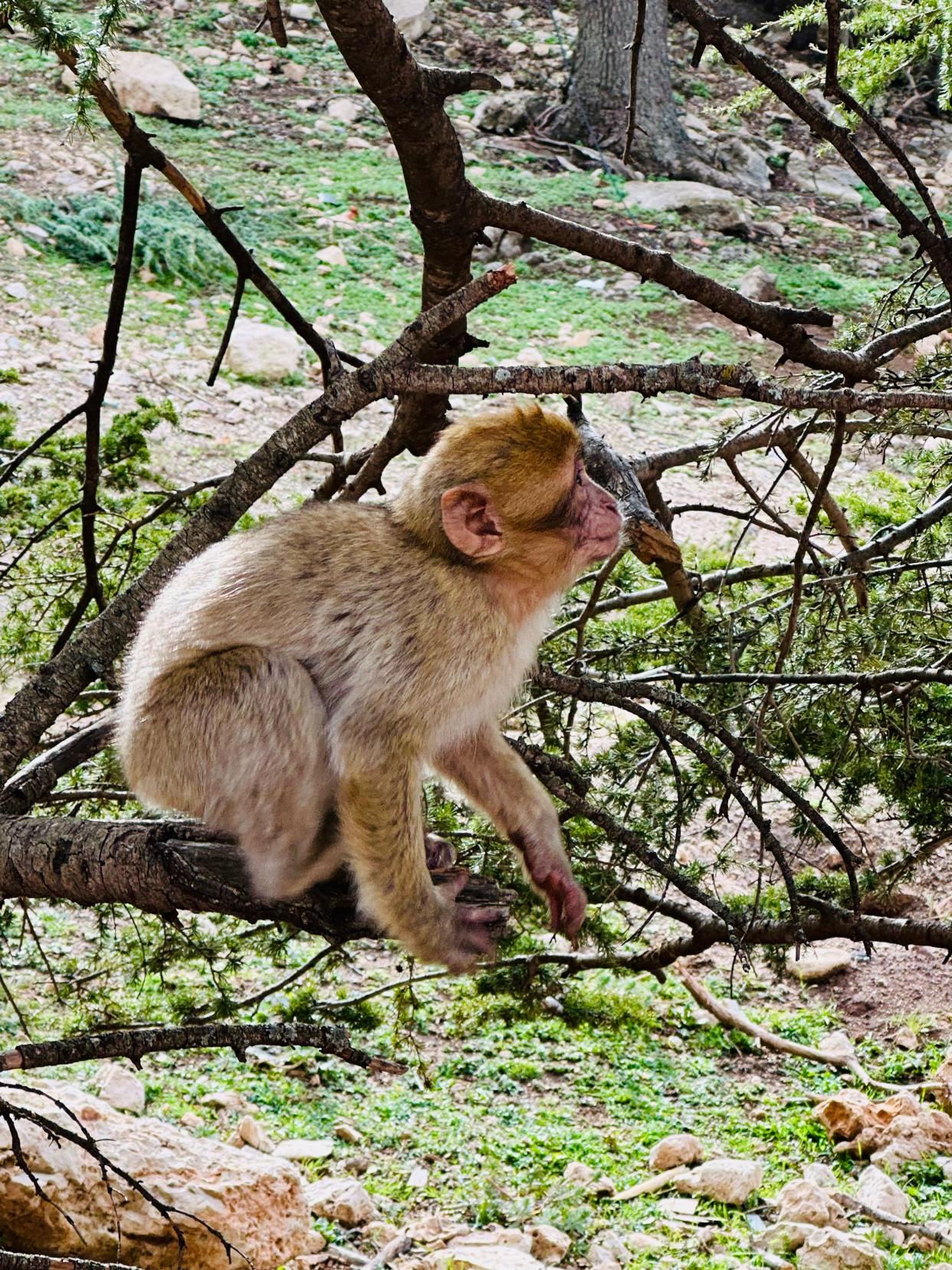
Our tour guide, Nory, knew where these little monkeys could be found in the treed area. We got off the bus to take photos. Some men with Berber horses (a type of breed, which seem slightly smaller than horses I am used to) approached us to take photos and attempt to sell us rides.
Then, we climbed back on the bus, stopping in a village to eat tagine in a truly local café with the local people. This place also had squat toilets, which is always interesting for us Americans.
We arrived at the Xaluca in late afternoon, and enjoyed a buffet meal (there was pizza!) and called it an early night.
Read part one: From Manitowoc to Morocco: My journey to this exotic and wonderful country, part one
Traversing the rolling dunes of the Sahara was like being on a movie set.
In the morning, we left our bus behind and divided into groups of four. We each had a driver and a 4x4 vehicle that would take us to our camp in the Sahara desert.
Jude and I were fortunate enough to ride with both Nory and our hometown tour organizer, Suzanne. We could have all our questions answered!
Jude and I always wondered how the drivers knew where they were going. Once you got off the main highway, the desert had what we would call trails — sort of unmarked graveling dirt/sand tire tracks they would drive through the open desert on. They knew where to turn to find our destinations, but we never noticed any signs or other landmarks.
Nory told us large parts of the western Sahara are owned by the Moroccan government. Our camp area is owned by the Moroccan army and leased to the private company that runs the camps.
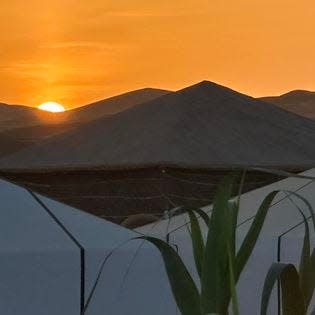
It’s impossible to describe the drive through the rolling dunes of the desert — with blue, cloudless skies and miles of no signs of civilization — that would do the experience justice. Sort of like being on a movie set.
The sand just looks soft, and you can see the ripples in the ever-moving sand. Definitely one of those moments in life when you can’t really believe you are where you are. Which is one of the main points of traveling, right?
We made a brief stop at a market in a small desert town. Nory wore traditional Berber clothing and explained how various wares are used in everyday life.
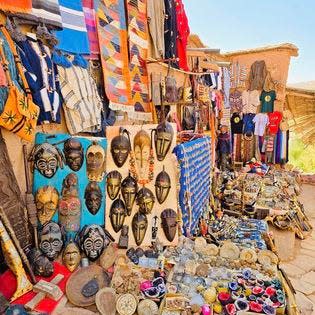
This market was more rural than the one we experienced in Fes or would visit in Marrakesh. I felt like I did when I visited my aunt and uncle in Kumba, Cameroon, two decades ago. They were there as missionaries. Seeing a taste of the African part of Morocco was interesting to me.
We stopped at a small shop (or farm?) — some sort of place that had baby camels and a gift shop. We saw a guy milk a two-week-old camel and some of us tasted the milk. To me, it tasted like slightly less-fatty cow’s milk.
Our group also visited a traditional Nomadic family. They did not speak English, so Nory translated for us. There was a grandfather and a younger couple and their young children. They live in a simple home made of sticks and stones. They have water and food storage. They teach the children at home, and they move when the weather gets too warm or too cold. They live on so little, some in our tour I think felt bad for them and wanted to give them money, but Nory said these nomadic families are content and prefer a simple way of life. They are born into it, I guess.
They also served us mint tea and cookies. No matter where we went, Moroccan people always wanted to share tea — and a smile — with us.
Camping in the Sahara is nothing like camping in Wisconsin.
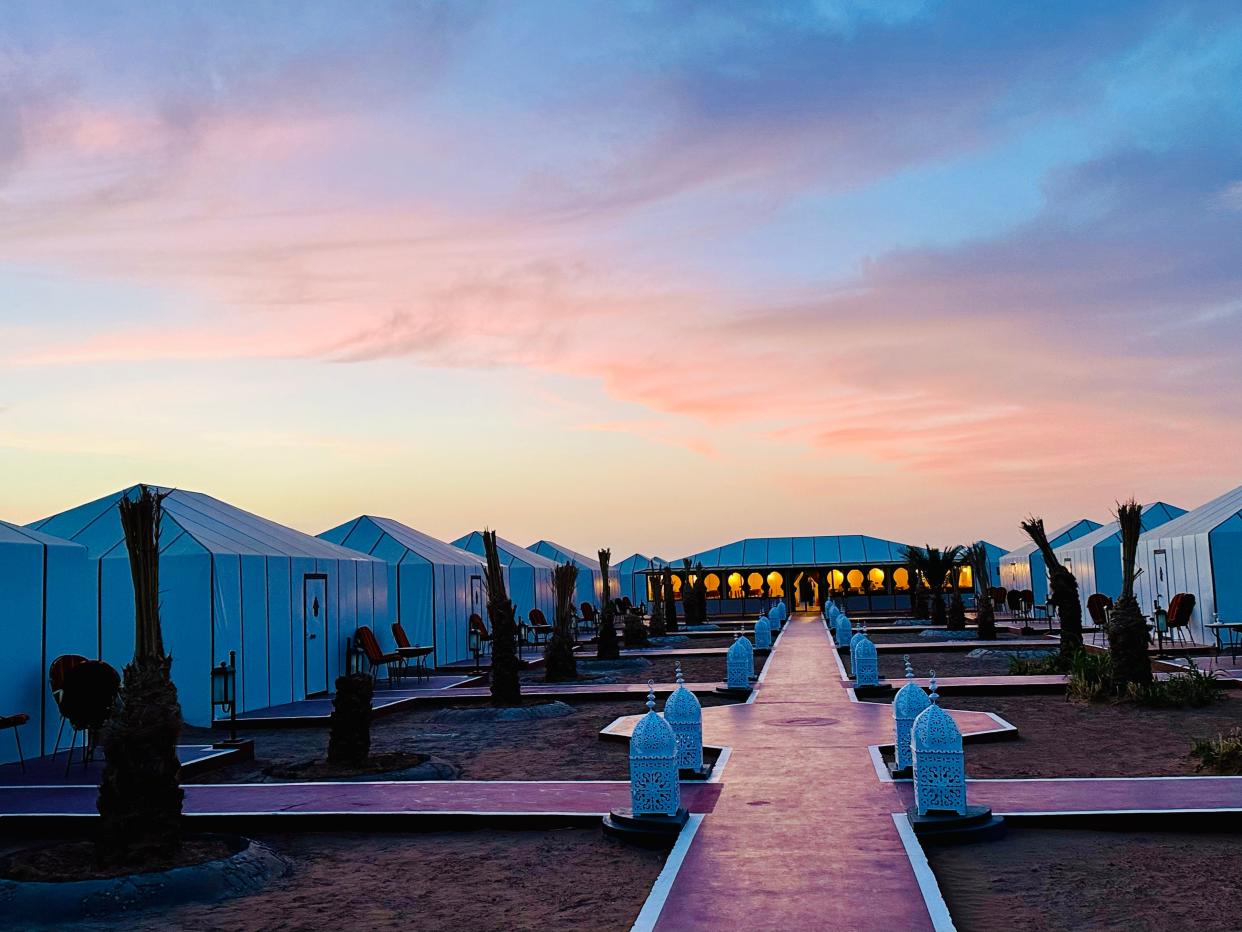
When we signed up for the trip, I thought our two nights of camping in the Sahara would be similar to the camping I do at home — pitch a tent, pull out your chairs and build a fire. Get your food out of coolers and roll out the sleeping bag.
Well, this camp was a giant step up from that. Each camp had around 12 “tents” that were made of strong canvas with cement walkways leading to the door and a little patio out front.
Jude and I slept on full-sized beds within our large “tent,” which had a door, window, electricity and a bathroom and shower.
Staff cooked a meal in the camp kitchen, and we ate in a full dining room, with a fabulous view of the desert dunes.
Everything ran on solar energy, and our staff lived in the camp, too. They also multi-tasked as we recognized our food server later playing with the drummers around the fire.
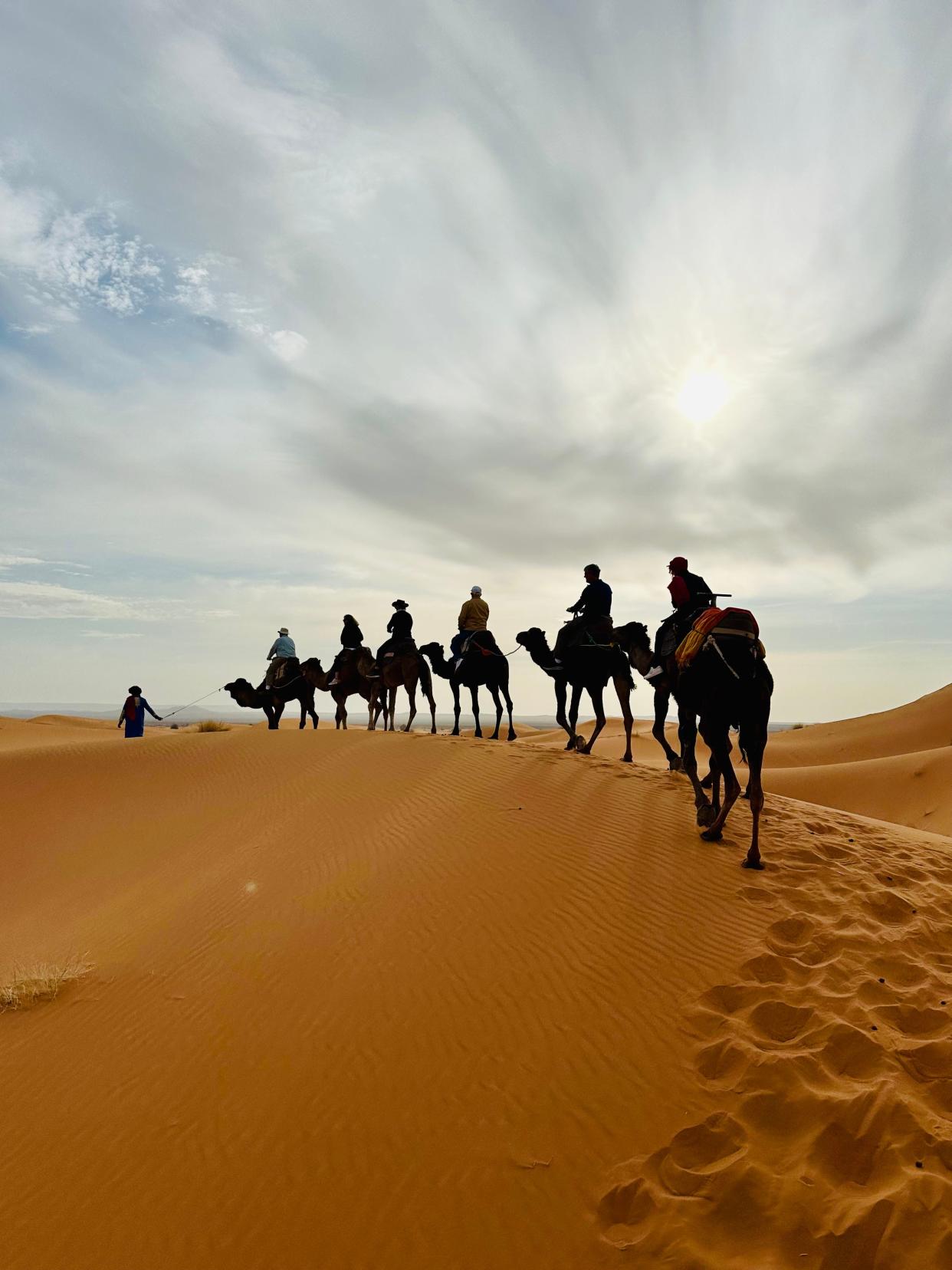
Friday morning (Feb. 16) was the main event. As we finished our breakfast, we could see camels at the far side of the camp. We were all so excited to climb aboard and have our ride in the desert!
The camels were roped together in groups of five or six, and we all got on our camels as they knelt in the sand. They had saddles made of carpets and we hung on to a metal bar. Our feet hung loose. Once the camel at the front got up, the other camels did, too. You leaned far forward and far back as they got up onto their long legs. The handlers led them over the dunes.
The ride was so cool! They went very slowly up and down the hills. Can’t say the ride was super comfortable, and half hour was about enough. Nory said the ride is less bumpy when camels are running, rather than loping along.
But our day was just getting started. We then climbed into our trucks and visited a deserted mine and a desert graveyard. We participated in a fun drumming lesson at a desert school where talented kids apprentice. We also stopped at a date farm (in an oasis in the desert) to learn about agriculture methods.
The next morning, we packed our ruck sacks and headed through the High Atlas Mountains.
The next two days would be mostly driving along the rugged “Road of a Thousand Kasbahs” to Marrakesh. It was interesting to see all these small towns and ancient villages, wondering what life is like for the people living in these remote areas.
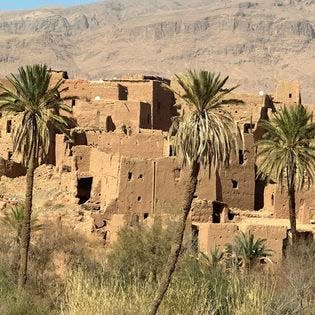
Visiting the busy and crowded city of Marrakesh.
We spent the next three or so days in Marrakesh, which is about as crowded and crazy as you might imagine.
I am not really a big-city type person, and three days is probably enough for me!
The highlight of this experience for me was a cooking class we took at a women’s training center. We sliced vegetables, added seasoning, and slow-cooked our dishes on outdoor clay fire pots. We learned how the Amal training school prepares women for culinary or chef careers, and also run a successful restaurant and catering service.
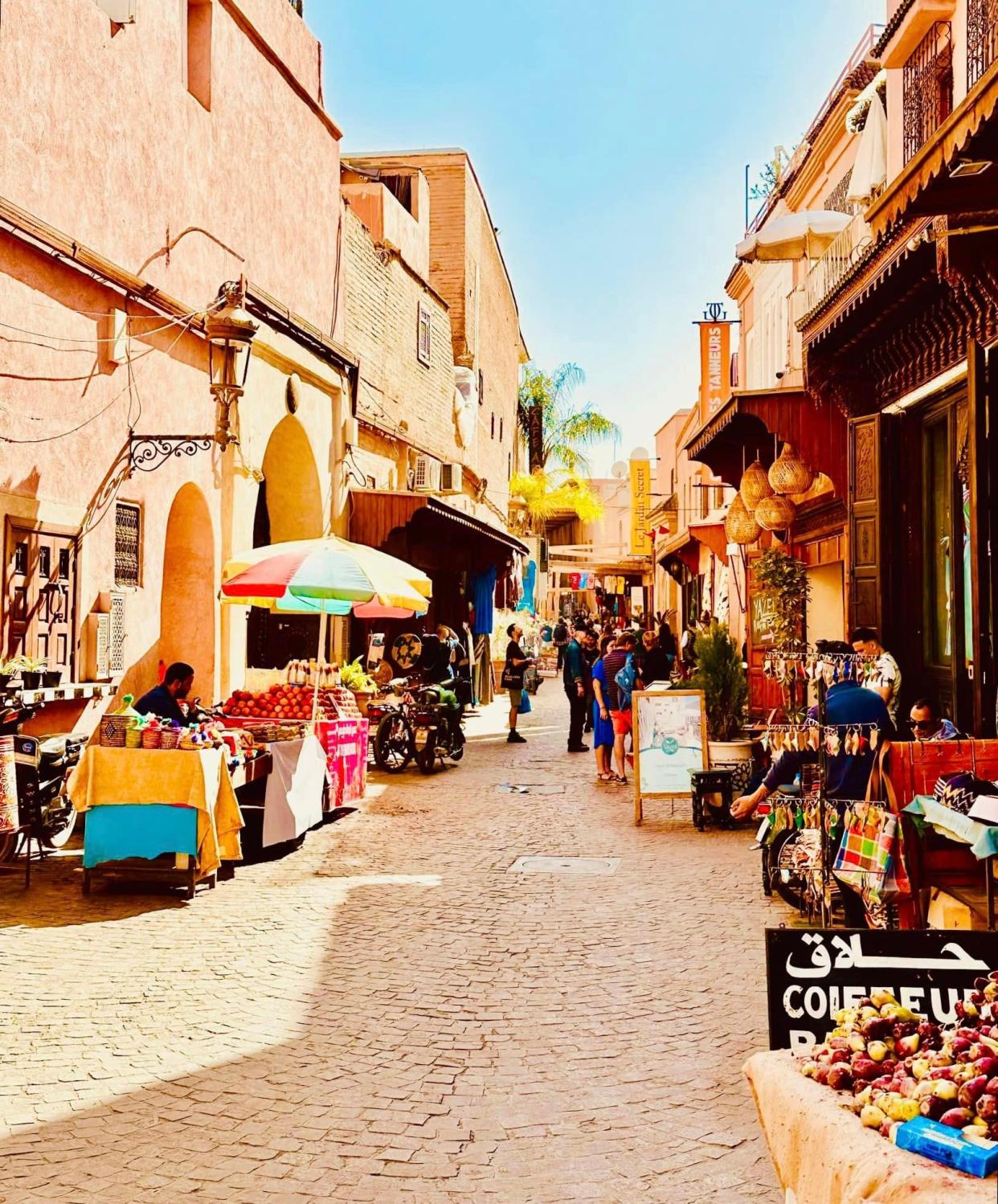
We had tea and ate the meals we cooked. When we returned to our top-notch hotel, Bob, who was part of our tour but did not do the class, told me he had found a yarn and fiber shop in the crazy Marrakesh marketplace! I was so excited!
I am a knitter and try to buy yarn whenever I visit a new place. I wasn’t sure if I would have luck in Morocco, but had located the Fiber Shop on Instagram. Bob had kindly bought some red yarn for me!
Since the group was going back to the marketplace, for people who wanted to shop, I was determined to find the Fiber Shop.
Our local tour guide knew where the shop was within the maze of the marketplace and led me there. Luckily, he also translated for me as I had about two seconds to choose the colors I wanted and bargain a price. Not like the yarn shops at home I am used to browsing through! I will never get accustomed to the in-your-face bartering system used in so many other cultures. I am truly a deer in the headlights.
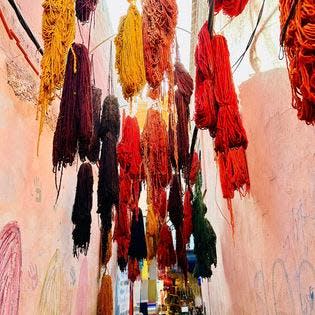
Now, I need to choose a project! Fiber was sold by the half pound, so yardage-wise, I am not exactly sure the amount I purchased.
We also had dinner in a local restaurant that served alcohol. I ordered the draft beer. They offer one kind … a bit different than the 20 beers you might find on tap in Wisconsin! We also had a blast singing “Sweet Caroline” with another American group when the DJ played the song.
Later, we toured the marketplace at night and took a charming horse carriage ride.
A trip to Germany: I went to Germany for two weeks to see Christmas markets and more. Here’s what I learned.

A final day in Casablanca, and parting thoughts.
Our final day was spent in Casablanca. We toured the Hassan II Mosque, which is breathtakingly beautiful. It is the largest mosque in Africa and the third largest in the world.
We ate our final meal at the famous Rick’s Café. It was fun, but as it was built in 2004, I don’t think Sam ever actually played there. The food was so good, and we were all chatty and sad it was time to go home.
We got up at 4 a.m. to head to the airport, and I got home to Green Bay at about 9 p.m. that evening. A long day, when you consider the seven-hour time difference.
Jude and I agree it will be hard to top this vacation. I learned so much, it’s hard to answer when someone asks me what my favorite thing was.
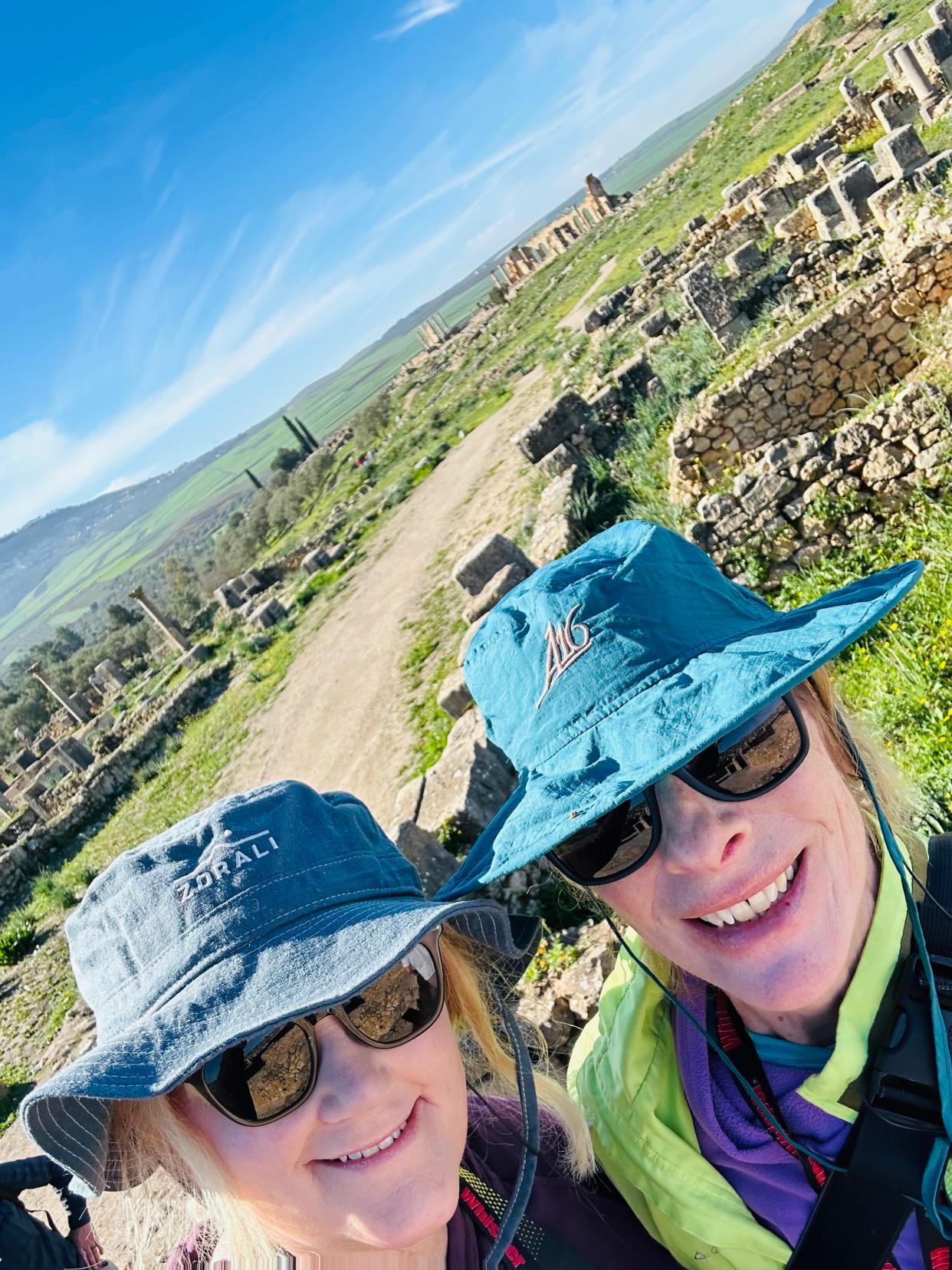
I appreciated that I went with a group of people from northeastern Wisconsin, as we had things in common to talk about and can stay in touch.
I appreciated traveling through Collette, which puts an emphasis on educational pieces to a travel experience.
I appreciated taking a tour with Nory as our guide. He was very open in sharing his life story with us, and his knowledge of the culture and people added a lot of depth to the experience.
I liked talking to the people. I enjoyed talking to a young guy running a stand in the Marrakesh market about his life, what brought him from the hills to the city, and how he drives a scooter in the crazy traffic and narrow streets of the medina!
I hope to get back to Morocco at some point, to see the northern portion I missed this time around and revisit some other spots.
When talking to folks from other countries, especially ones less developed than the U.S. I always feel this: we have it so much better than we realize. We take our belongings, our incomes, our homes, our wide-open spaces, our education, our large middle class, our freedoms, for granted.
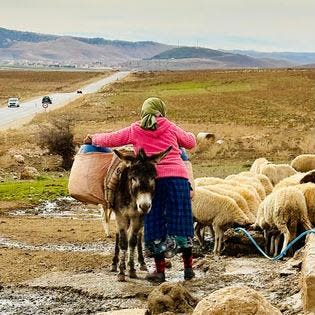
I also feel this: We don’t have it as good as people in other places think we do. There is a lot of corruption here, too, and poverty, and the freedom to move around or own a home or get a great education is not distributed evenly in the U.S., either.
But a person never gets that chance unless they leave their own back yards. Yes, technology has made our world smaller. But a digital experience will never replace a real-life experience.
Please, if you get the chance to go — GO. I said “yes” to a trip to Morocco. And I will never regret that.
Contact reporter Patti Zarling at pzarling@gannett.com or call 920-606-2575. Follow her on X @PGPattiZarling or on Instagram @PGPatti.
This article originally appeared on Manitowoc Herald Times Reporter: Reporter from Manitowoc, Wisconsin, travels to Morocco, Sahara, Casablanca